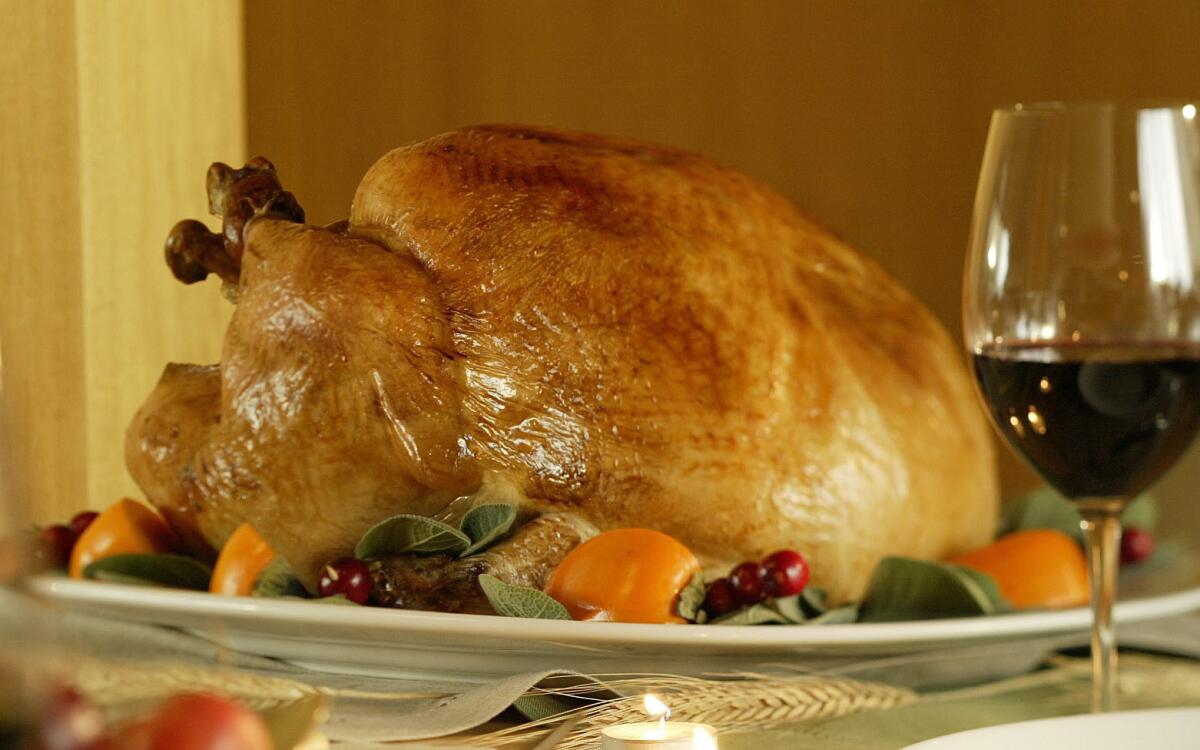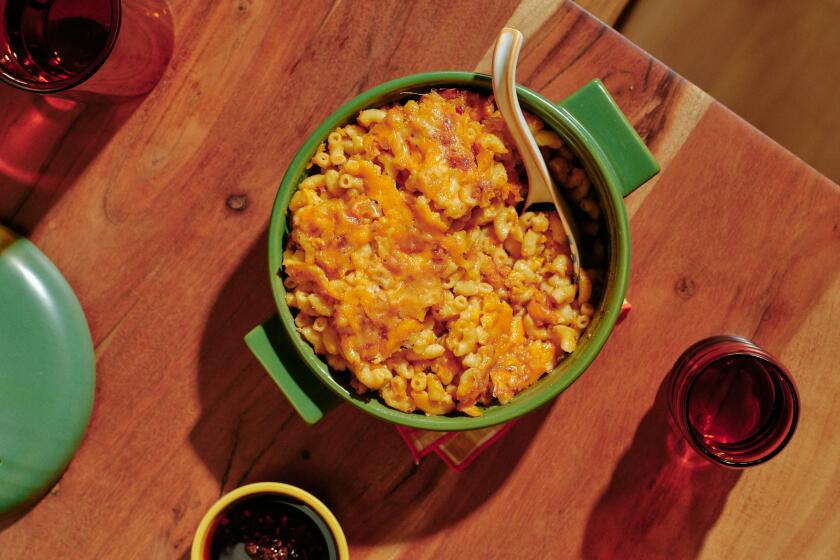Basic wet-brined turkey

Thanksgiving is a holiday when we all eat together in a spirit of warmth, kindness and loving togetherness. Unless, of course, someone mentions brining a turkey. Or brings up the matter of mashed versus “smashed” potatoes. Then things can get really ugly really quick.
Cooks and eaters have strong opinions and are not afraid to express them. The fact that one person has a big knife in his hand (and controls the flow of the food) is sometimes all that keeps dinner from dissolving into a riot.
What are these two particular controversies about?
The question of potatoes is purely one of taste. Or, perhaps more accurately, texture.
Classic mashed potatoes are silky, smooth and wonderfully rich. You can only get this combination with baking potatoes and copious amounts of butter and cream. The type of potato is important because these drier potatoes have a high percentage of starch, specifically of a type called amylose that dissolves during cooking. These potatoes crumble almost to flour after cooking, making them perfect for whipping into a light, smooth purée.
There are those who say that the recent popularity of so-called smashed potatoes is nothing more than nostalgia for what we used to call lumpy potatoes. Whatever. There are times when a velvet-smooth purée is not what you want, when you hunger for something a little more substantial. For these, you use what are usually called boiling potatoes. These contain more moisture than bakers and are higher in a starch called amylopectin, which holds them together after cooking.
Incidentally, it’s this amylopectin, which is also present albeit in smaller amounts in bakers, that turns potatoes puréed in a food processor into a gluey mess.
When it comes to turkeys, the argument is about the best way to brine: salting the meat so that the chemistry of the muscle changes, enabling it to retain moisture longer during the cooking process, preventing the meat from drying out.
The big question is whether it is better to brine a bird by sticking it in a bucket of salt water or by simply sprinkling it with salt. (Indeed, there are many out there who are already howling at calling the latter “brining” at all, since it doesn’t involve salted water. They were probably hall monitors in junior high. Pay them no mind.)
Having been a devoted member of both camps at different times in my cooking career, for the last several years I have come down firmly in the dry-brining camp. This is for reasons of both practicality and taste.
Practically speaking, dry-brining wins because you don’t need to keep a big icy bucket of bird in your refrigerator.
For many, that is reason enough by itself. But more important, I think, dry-brining makes a better turkey. With wet-brining, the bird absorbs so much moisture the meat feels spongy when you slice through it. With dry-brining, the meat stays moist but keeps a firm and muscular texture.
That is my preference. Other cooks I respect, notably chef Thomas Keller, disagree and still favor wet-brining. I prefer to think this is because they have not yet tried to do it my way, but I’m not going to fight about it. It’s Thanksgiving, after all.
russ.parsons@latimes.com
Combine the salt and water in a large pitcher and stir until the salt dissolves. Place the turkey in a pot just large enough to hold it and pour the saltwater over it. If the turkey is completely covered, don’t worry about using all of the brine. Cover the top with foil and refrigerate 6 hours or overnight, turning 2 or 3 times to make sure the turkey is totally submerged.
Remove the turkey from the brine and pat it dry with paper towels. Return it to the pot and refrigerate it, uncovered, 6 hours or overnight to dry thoroughly.
Heat the oven to 450 degrees. Place the turkey on its side on a rack in a shallow roasting pan and roast 15 minutes. Turn the turkey to its other side and roast another 15 minutes. Finally turn it breast-side up and roast another 15 minutes.
Reduce the heat to 325 degrees and roast until a meat thermometer inserted in the center of the thickest part of the thigh registers 160 to 165 degrees, about 2 hours. Remove the turkey from the oven and set it aside 20 minutes before carving.
Get our Cooking newsletter.
Your roundup of inspiring recipes and kitchen tricks.
You may occasionally receive promotional content from the Los Angeles Times.
















